#guillermo del toro analysis
Text
Autism & Guillermo del Toro
While some light research of "Guillermo del Toro autism" doesn't get many results, other than complaints and praise for The Shape of Water, it is apparent that many of his characters are autistic.
Aurora || Cronos (1993)

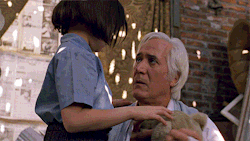
Aurora is near-mute, but has a lot of agency despite this. She isn't afraid to kill a bug or help Jesus defeat De la Guardia. In fact, she's the main heroine of our story, despite her silence. She shows intense feelings, especially of love for her grandfather, shown in scenes such as where she reaveals shes ripped the head off her beloved teddy bear to put the Cronos device inside. She's incredibly smart for her age and very capable, but I believe her (maybe not optional, but definitely not permanent) silence is vindictive of her autism. I cannot figure out what her special interest would be, though.
Chuy || Mimic (1997)

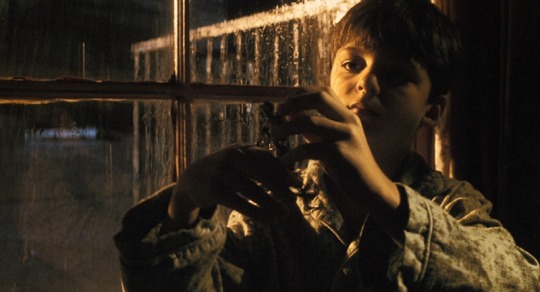
Chuy is another one of Guillermo del Toro's strong children. Shown first playing spoons incredibly skillfully and crafting creatures out of wire, Chuy has unique interests. He can tell the exact type of shoe down to the size because of his grandfather, and he has the ability to perfectly mimic the Judas' cry. He's nearly silent but not always, and he seems unaware of the rules of the world, leaving his home and entering the subways seemingly unaware of the danger. Upon watching a man get sucked into a gutter, he barely reacts. One pivotal scene showing his autism would have to be when he's trapped in the elevator shaft and has a meltdown. He also speaks in a somewhat unique manner. His special interests are obviously playing spoons and shoes.
Ofelia || Pan's Labyrinth (2006)
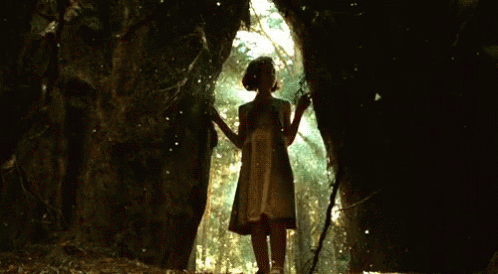

Ofelia is yes another child character who shows a lot of agency, going against what practically everyone tells her to follow her own path. But she's also very bookish, obsessed with her fairytales so much she believes anything the fantastic tells her. She crawls through the mud and talks back to adults, keeping a somewhat quiet demeanor otherwise. I believe her special interest is fairtales.
Newt || Pacific Rim (2013)
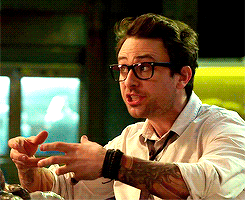

Not a child, but worth mentioning anyways, is Newt. He's obsessed with Kaiju, to the point of drifting with one multiple times (and eventually.. living with one?). He speaks fast and erratically, he knows every indexical fact about Kaiju, and he's obviously insanely smart. He's, however, balanced by his childlike wonder at everything. His love for kaiju is, of course, his special interest.

Hope you enjoyed my analysis! I'm missing plenty of characters simply because I haven't seen his full repertoire yet! But as an autistic person, I love to find it in everything else!
#guillermo del toro#cronos 1993#cronos#cronos film#mimic#mimic movie#mimic film#mimic 1997#cronos movie#pans labyrinth#pans labyrinth film#pans labyrinth movie#pacific rim#pacific rim film#pacific rim movie#pacific rim 2013#pans labyrinth 2006#guillermo del toro film#guillermo del toro analysis#film analysis#movie analysis#autism headcanon#autistic headcanon#headcanon#autism#sorry there were no chuy gifs
19 notes
·
View notes
Text
Carlo's death did not just take happiness away from Geppetto's life, with the bombs falling and hitting the church, that marked the death of joy and happiness for Italy.
In the flashback, what we see is not just a Geppetto who was happy, but a town that was welcoming, warm. A place where a kid could run freely and people would just laugh and smile. with Vibrant colors and streets filled with people.
With the bombs and the rise of fascism, the town becomes colder, more somber. The people are more wary and don't trust anyone. The church, which before had greeted Geppetto with joy and happy to let him work at his pace, is now eager to codnemn, to angrily ask why their Christ is still unfinished. The streets are empty, except for people who are afraid of their own shadow
And then we see a circus, a place kids love and are excited to see. And are excited to see the magic puppet that walks on it's own with no strings and who dances and sings
And eventually the circus is reduced solely to that one act.
and that act eventually becomes propaganda for the glory of Mussolini's Italy.
And even the kids, happy as they are, eventually get thrown to the youth camp, where they are trained to become killers. Soldiers to eventually die fighting the enemy. Until you believe your very life exists for the sake of being useful to your authoritarian ruler.
Fascism kills. Not just people, but it kills joy itself
#pinocchio#guillermo del toro#guillermo del toro pinocchio#pinocchio 2022#gdt pinocchio#analysis#my stuff#netflix#animation#stop motion
408 notes
·
View notes
Text
pickman’s model cabinet of curiosities most accurate true to the source material lovecraft adaptation of the 21st century. keith thomas thank you for my life! we got ghouls. the elder sign. miskatonic university and arkham. lavinia whateley. iä yog-sothoth chants. shub painting. pickman’s pictures moving and shifting in horrible ways to convey the terror that will experiences from seeing them on screen. eyes that bleed from what they’ve seen. ‘the darkness’ as a queer allegory along with the corrupting force of art, believe it or not, in the hannigram or loustat vein of things (‘do you feel it, Will? the fear?’ that’s how you subtext! plus, death as a sort of artistic medium) richard picking the mystical other world and getting dragged into the well. will shooting richard as the ultimate noble betrayal; choosing his family over art, over his ‘mentor’ and ‘friend’, over the macabre reality he glimpsed, only to be faced with it twice as harsh upon return. because you can’t turn a blind eye or run or hide from the truth when it’s already gotten to you. everything i love the mythos for, it’s all present here, goddamn
#not coherent? i don’t even care. figure it out#the witch house was……..intriguing. not the dreams in the witch house i expected but#watching it with daniel ‘irishguy’ to feel the WHIPLASH of walter and BROWN JENKIN being irish was inimitable#AND ELWOOD WAS THERE#maybe that’s for another post.#cabinet of curiosities#guillermo del toro#lovecraft#pickman’s model#dreams in the witch house#jeddie.txt#media analysis#mythos tag
507 notes
·
View notes
Text
I want to underline a little detail I saw in gdt's Pinocchio and it's sebastian's house
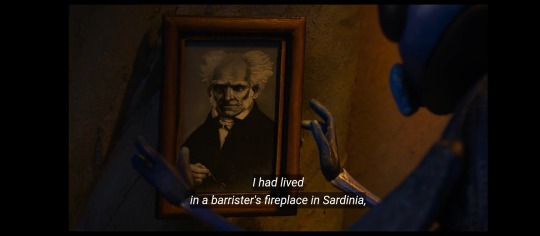
He (at least in the Italian dub, I will soon watch it in English, and btw the italian dub is majestic) he often says things like "it's a sofference" or similar phrases (Especially whe he is hit by something). It doesn't surprise me that one of the photographs in his house it's Schopenhauer, the philosopher of the sufferance
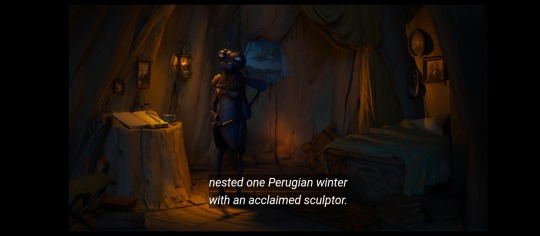
Then of Course over the bed there's Manzoni, THE modern italian author of excellence when we talk about novels (never heard Promessi Sposi?)
#pinocchio#guillermo del toro#guillermo del toro pinocchio#sebastian j cricket#geppetto#stop motion#gdt pinocchio#thoughts#paints analysis in gdr pinocchio
166 notes
·
View notes
Text
Her goal for her makeover is not, as one might expect, to land a man but to land friends. To find her place in their world. A lover and companion are not enough. No man is an island and two people are not a community.
Gender as Taxidermy: Why I’m Obsessed With This Episode of ‘Cabinet of Curiosities’
#guillermo del toro's cabinet of curiosities#the outside#tv#brittany knupper#ana lily amirpour#analysis
75 notes
·
View notes
Text
I'm writing an analysis post on Candlewick and Spazzatura and a part of it is examining their backgrounds, finding out why exactly their instinct is to pick on Pinocchio. It comes down to having fathers (or more so masters in Spazzatura's case) that were abusive. In Candlewick's case specifically... even as a blacksmith, the Podestà never had a single caring bone for kids.
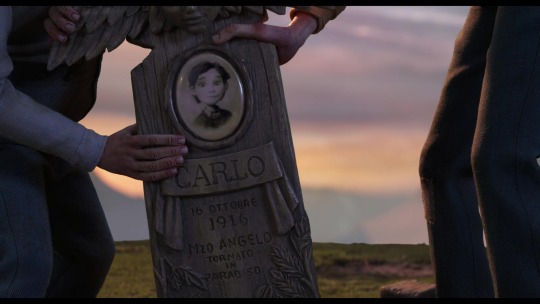
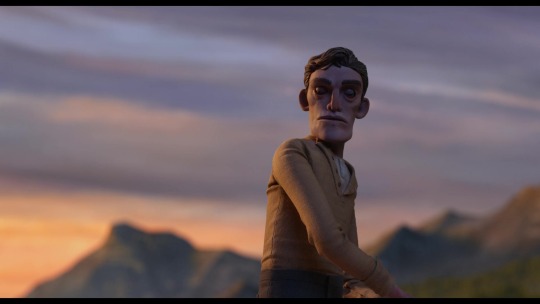
He helps hammer in Carlo’s grave but what do we see from him? No sympathy. Compare that to the villagers present.
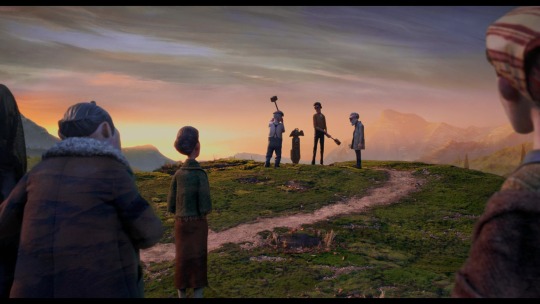

And earlier it’s his wife who makes the warm remarks about Geppetto and Carlo, specifically their bond.

All he comments is "a model Italian citizen" of Geppetto, which shows he only cared about his nationalist views instead of his wife's own wishes to start a family.

And he completely ignores her comment.

So it isn’t surprising he becomes an abusive father (or a fascist, re: his comments).
A man that shows no sympathy when a child that’s loved by half the village dies? That’s a warning sign of a man unfit to be a father. Let alone a high official in town.

Podestà sires a son anyhow in Candlewick. But one must wonder, did he just do it for the sake of furthering future soldiers for Il Duce? I wouldn’t be shocked. It would make too much sense, really.
86 notes
·
View notes
Text
So my seventy-year-old mother and I saw Guillermo Del Toro’s Pinocchio in theaters the other day, and it’s official —
We both like this film better than the Disney version.
Admittedly Pinocchio has never been one of our favorite Disney films nor stories in general, but we still do think of the Disney version primarily when we think of the story, just like a lot of people do. I do think Disney’s songs are much better, and of course the animation in the Disney version is gorgeous — but just about everything else, Mum and I like better in Del Toro’s film.
Pinocchio in Disney’s version just sort of naively follows whatever the last person told him to do in the beginning, with few feelings or opinions of his own. When he gets roped into being an actor by Foulfellow and Gideon, he just completely forgets about school or about Geppetto. Jiminy Cricket even explicitly tells him to tell Foulfellow he’s sorry, but he has to go to school, and mere seconds later, that advice has gone in one ear and out the other. Del Toro’s Pinocchio, however, remembers that he wanted to go to school and obey his dad — he instead only intends to go to the carnival and then to school, but gets distracted by how fun it is, which is a very normal thing for a child to do. And when he sees how upset that’s made his father, he joins the carnival in a misguided attempt to make things right. Del Toro’s Pinocchio embodies the essence of a child much more accurately than Disney’s version to me — the hyperactivity, the enthusiasm, the desire to please — and never fails to show that however much Pinocchio learns about the world, he’s still just a kid.
Disney’s Pinocchio never really gets much time to bond with his father, nor do we really learn much about Geppetto or why (if he so desperately wanted a child) he never just adopted one — Del Toro’s Pinocchio and Geppetto’s relationship is so much more heart-wrenching not just because Pinocchio was a drunken, rushed attempt by Geppetto to try to recreate his lost son, but because both of them have to learn a lesson and grow beyond their flaws and mistakes. Del Toro’s Geppetto haphazardly building Pinocchio out of drunken grief perfectly explains both his motivations and fleshes out his character and personality so much, and the conflict regarding suddenly having Pinocchio as a son after having lost Carlo is so believable and heartbreaking.
Disney’s Pinocchio is brought to life by a seemingly omniscient Blue Fairy who decides to only half-grant Geppetto’s odd wish for Pinocchio to be a real boy. Del Toro’s Pinocchio is brought to life by a much more chaotic, mysterious, and mercurial pagan entity, which better explains why Pinocchio isn’t magically made human, as well as the strangeness of the premise itself. Her being less aware of humanity or even the trouble Geppetto and Pinocchio would go through because of her choices also makes her less of a deus ex machina in the story.
Disney’s Pinocchio has a very one-sided relationship with Jiminy Cricket, where Pinocchio is intended to learn lessons largely based on Jiminy’s advice, even though Jiminy honestly is no saint either. He can be incredibly condescending and judgmental, as well as hypocritical — yet he’s treated by the Disney film as the moral center. Del Toro’s Pinocchio both learns from and teaches the similarly self-absorbed Sebastian J. Cricket, and they both grow through their experiences both together and apart. Their relationship comes across as much more heartfelt, to the point that Sebastian literally residing in Pinocchio’s heart upon his death is just…AUGH, it wrecks me!!
Disney’s Pinocchio seemingly forgets about his “friend” Lampwick the moment he leaves Pleasure Island. Del Toro’s comforts Candlewick, teaches him to be brave, and even protects him from his terrible fascist father. And yes, even if it’s not shown in the movie, I steadfastly believe Candlewick survived and he and Pinocchio were best friends for the rest of their lives. :|
Disney’s Pinocchio centers around the idea that when you do good, good things happen to you — but the problem I have with that is that what is considered “good” is largely framed as doing as you’re told and not doing what society dictates is delinquent behavior. Yes, it’s good to get an education, and yes, Stromboli was a bad man and you shouldn’t trust strangers — but there’s nothing wrong with going into show biz instead of chasing academics if that’s really what you want to do, and it seems strangely like victim-blaming, to punish a child for getting tricked and manipulated by ill-meaning adults. The same might apply for Pleasure Island — yes, perhaps it’s not healthy to smoke or drink lots of alcohol, and no, you shouldn’t get into fights or damage people’s property…but does that truly justify these stupid children turning into helpless donkeys for the rest of their lives, with seemingly no chance at rescue or redemption? Pinocchio gets a chance to make amends and do better, so why don’t the other boys?
Del Toro’s Pinocchio, however, is about — in Sebastian’s words — “doing the best you can, because that’s all anyone can do.” Pinocchio wants to be good and do good, but what’s “good” isn’t always so simple to define. It isn’t always doing what you’re told, but it’s also not always doing what you want when you want, either. And ultimately, Pinocchio’s innocence and relative immortality (at least at the beginning) makes it easier for him to break the strings that have been tied around his loved ones — the strings of obedience to a cruel carnival man, an unloving father, or even a fascist dictatorship.
Then of course there’s the ending, where Del Toro’s Pinocchio becomes a “real” boy without having to change himself on the outside — and better yet, lives happily while still never having to change. And yes, the ending states he’ll probably die someday too, but that is also completely okay.
So yeah. Go see this movie in theaters or watch it on Netflix, if you haven’t already. It truly is a wonderful experience and I can’t wait to watch it again! ✨

54 notes
·
View notes
Text

Parallel thematic imagery in El Laberinto del Fauno (2006) and Twin Peaks: Fire Walk With Me (1992)
I enjoy drawing comparisons between these two. They’re both some of my absolute favorites and share a similar narrative, yet had starkly different receptions at the time of their release. While El Laberinto del Fauno has received the longest standing ovation in Cannes history (22 minutes), Fire Walk With Me was allegedly booed at the same festival. The former generally receives more artistic praise and renown as a very important film, while the latter is still fairly controversial, widely misunderstood, and often identified as a cult classic.
Both stories follow an adolescent girl navigating the cruelty of her daily life, characterized especially by a domineering father figure. The latter are both mirrored by supernatural figures that the protagonist encounters in their fantasy or dream realms. The Pale Man is a representation of Captain Vidal’s cold, murderous nature, while BOB is the evil that tormented Leland as a child and is now a part of him, leading him to serially abuse Laura.
Ofelia enters the labyrinth and is guided through her trials by the faun, similar to Mrs. Chalfont, who gives Laura the painting that allows her to explore other realms in her dreams. The faun gives Ofelia the chalk which allows her to create the door to the Pale Man’s chamber. Both guides have unclear intentions, but the lessons that both girls learn while in these temporal places gives them the knowledge they need to virtuously complete their journeys. Even dear Dale Cooper isn’t as reliable of a force as he may think himself to be. He and the faun are both with Laura and Ofelia after their lives are brought to an end. These ends both happen in the same way; they are murdered by their father figures.
Nonetheless, the happiest moments for both Ofelia and Laura come after their death, when they see their own versions of ‘heaven’, their respective versions of absolute peace and comfort. They both smile as they realize their pain is over.
“One day, the sadness will end.”
#guillermo del toro#gdt#pan’s labyrinth#el laberinto del fauno#david lynch#twin peaks#fire walk with me#laura palmer#film stills#film#movies#film analysis#film comparison#comp lit#parallels
36 notes
·
View notes
Text
youtube
Behind every monster is a shadow we need to confront… so what can we learn from the Pale Man?
#tale foundry#writing community#writing inspiration#writers of tumblr#writers on tumblr#story ideas#pans labyrinth#pan’s labyrinth#guillermo del toro#dark fairytale#dark fantasy#movie monsters#character analysis#media analysis#the pale man#fantasy fiction#fantasy film#horror fiction#Youtube
2 notes
·
View notes
Text
Pinocchio and sun motifs
To start with, the sun gives life to trees (and everything)
Gepetto’s song begins “My son, my son, you are my shining sun”
The blue fairy says to the wooden puppet, “Rise with the sun”
On the wall over Pinocchio’s bed there’s a small sun drawing (probably done by Carlo)
Pinocchio’s “signature” is a smiley sun
List to be updated
23 notes
·
View notes
Text
So Monday night we watched Pacific Rim.
Then, yesterday we met up with a friend, who mentioned to mr Pancake that Uprising exists. He got curious, so we watched it.
There is so much wrong with that movie.
I'll put a cut here because a) it's Spoilers if you haven't seen either movie, and b) it's a long, long rant.
I would die happily without remembering that movie even existed. So, thank you, friend, for reminding me of it. 😒
First things first, they're ignoring the established lore. On the words of Ron Pearlman, Kaiju bone sells for 500 dollars a pound, so why are there still so many carcasses laying about?
Also, the war ended 10 years ago! Why are Jagers still in production? The whole shebang of the first movie was that the program was ending, and they were given a final shot at the Jagers before the walls were done. The governments didn't want to keep the Jagers then, they sure as fuck wouldn't want to keep them after the war!
(Attack on Titan looking kinda weird.)
And why do they have Jagers strolling around casually? Those things are heavy and expensive to maintain. They would stay in docks until they were needed, make quick work of the Kaiju and return to docking. What's fueling the Mark VI Jagers?
Why wasn't Jake ever even mentioned in the first movie? Where did the kid come from? He just popped up and we gotta swallow it now? And this kid wouldn't be poor! His dad was Marshal Stacker Pentecost, ffs! His sister is Mako Mori! His family are all high ranking war heroes!
Then... There's the kids. The biggest human issue we had in the first movie was actual tension between the GROWN UP pilots, who were dealing with the apocalypse incoming their way. Now, we have kids fighting over who's getting the top bunk.
And don't (please do) get me started on the drift. First movie? They were all family. We had two Russian siblings, Chinese triplets, father and son, twins... People you already share memories with, what makes it easier to drift.
The second movie? They tossed a bunch of random kids together and expected them to drift on day fucking one! Not even Mako and Raleigh managed to drift on day one, and he was ready to give her the world the second she showed up. They actually spent time together before attempting to drift. Talked. Got to know eachother for a couple days.
Yes, sure, there was the impending apocalypse knocking at their doors so they had to speed run a drift compatibility. But it made it believable. The cadets on Uprising didn't have to deal with the world ending.
That Chinese lady? Boss, have the whole "I hate repeating myself" thing? Did they want to divert us into thinking she was the BBEG when Newt (Charlie Day, my second favourite character in the first movie) was acting completely out of character and LITERALLY DATING A FUCKING KAIJU BRAIN? LIKE THAT WASN'T INCRIMINATING ENOUGH?
[deep breaths] ok. I'm calm.
And did they want the boss lady to be a strong female character? She was annoying. They already had a strong female character. Yes. Mako Mori.
I'm honestly glad she died when she did, before they had the chance to destroy her character for good.
And why did they present the solution (Jagers still in commission) then the problem (Obsidian Avenger/return of the Kaijus) to justify the solution?
It's been 10 years since the war! The world wouldn't still be in shambles!
I would have liked that movie if:
"look, we built some Jagers again to put as a display/just in case, and transformed the Shatterdome into a wartime museum."
"oh no. The Kaijus are back! Who can help us now?"
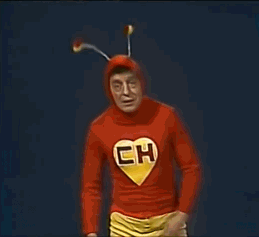
Put together a ragtag band of fighters, trained by Mako and Raleigh (happily married, thank you. Also, please feel free to send some fluff fics of them my way), and they have to help new pilots to find their way into the drift. There would be a lot of awestruck new pilots, being like "omg, we're being trained by them!", while others are like "what do you know? Your war is over." And they have to wrangle the kids to get a fighting force to go and destroy the Kaijus.
That would make it a better movie. Not necessarily a good one, but one where we're willing to suspend our disbelief and fall back into the amazing lore of Pacific Rim.
Yes. I like the lore of Pacific Rim. Sue me.
ETA: it was such a bad movie, I only remember the names of two characters, Mako because Mako, and Jake, because he's supposed to be the main character.
#pacific rim#pacific rim uprising#talk about a bad sequel#for an amazing movie#pancake comments#pancake rewrites#movie critic#movie review#movie critique#is it too much to ask#for a sequel that isn't a moneu grab?#stuff the movie did wrong#movie analysis#movie critical#guillermo del toro#Guillermo del toro needs to go his game#i miss hellboy#his last good movie was Pacific Rim#it was a downward spiral#this movie is so badd#it made my bad movies radar break#I need Mako and Raleigh fluff fics as brain bleach#i want to forget
3 notes
·
View notes
Text
already mention this to my friend in another post but i think disney's version of pleasure island could be read as a metaphor for the dissonance between a kids view of adulthood and the sad harsh reality of being an adult in a capitalist society (at least as like a lower/middle class citizen as how the kids seems to be)
like think abt it smoking and drinking alcoholic drinks is probably what children sees adults do a lot and so associated them with it along side more freedom since as an adult u dont have to listen to ur parents anymore
and so pleasure island is exactly that a place where u have complete freedom and u can do what kids think adults do aka smoking and drinking
to put it simply the amusement park pleasure island is essentially how kids view adulthood
however the donkey thing is the harsh reality of adulthood in capitalistic society. as nothing is free and you have to pay for everything you get and labor is symbolized by being a donkey essentially becoming yet another corporate slave to run the economy
this is also why i found gdt's take on pleasure island interesting as it's kinda the same concept except you replace capitalism with war fascism and it's harsh realities, how kids dont fully grasp the full reality of war and becoming yet another expendable soldier is basically compared to turning into a donkey
10 notes
·
View notes
Text
The thing about Pinocchio is that it's completely sincere while also taking the piss out of things? Like it doesn't do that thing that so many films do where sincerity is completely shunned to make way for cheap gags and cynicism.
Yes, Ewan McGregor gets battered every time he tries to sing about his dad or whatever but Pinocchio desperately trying to save his dad isn't played for laughs at all.
You can be funny and not completely serious without giving upa sincere message and it's really nice to see that in a relatively mainstream animated film for a change.
12 notes
·
View notes
Text

'Death and Disobedience in del Toro's Pinocchio' analyses the film's portrayal of morality and death.
#non fiction#published#guillermo del toro#pinocchio#pinocchio 2022#del toro pinocchio#del toro#death#obedience#media analysis#goodness
3 notes
·
View notes
Text
GUYS
I UNDERSTOOD THE THIRD PHOTO NEAR SEBASTIAN'S BEDREST


IT'S D'ANNUNZIO. ONE OF THE MOST IMPORTANT ARTIST DURING THE FASCIST PERIOD.
You can't understand. This guy was... Peculiar...Go read wikipedia and go read La Pioggia nel pineto
THIS GUY HAS A FUCKING BOAT IN HIS GARDEN
#thoughts#gdt pinocchio#guillermo del toro pinocchio#pinocchio#sebastian j cricket#gabriele d'annunzio#geppetto#stop motion#guillermo del toro#paints analysis in gdr pinocchio
56 notes
·
View notes
Quote
Poe grappled with the darker side of mankind, with the demons that reside within us: our mind, a crumbling edifice, so king slowly in a swamp of decadence and madness. He knew that a rational, good-hearted man could, when ridden by demons, sink a knife in the eye of a beloved cat and gouge it out. He could strangle an old man or burn alive his enemies. He knew that those dark impulses can shape us, overtake us, make us snap—and yet, we would still be able to function, we would still presume to possess the power of rational thought.
Why would anyone say we are mad?
Guillermo Del Toro, Haunted Castles, Dark Mirrors
#horror quotes#horror writing#horror analysis#writing references#writing analysis#* mine.#again not actually mine#just words of wisdom from mister gdt#guillermo del toro
7 notes
·
View notes